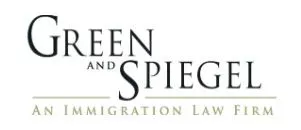Congress created the H-2B program in 1986 with the passage of the Immigration Reform and Control Act (IRCA). This new non-immigrant[1] class was designed for non-agricultural employers with a short term demand for workers who were unable to find workers to satisfy that demand.
Employers with this type of a need may ask the Department of Labor (DOL) to certify a lack of sufficient workers in the area of intended employment. With certification, employers may petition the United States Citizenship and Immigration Services (USCIS) for H-2B visa spots, and send the workers to the Department of State (DOS) to obtain on H-2B visas.
A specific prerequisite to use H-2B program is the establishment of the temporary nature of the employer's need. The petitioner's need for the duties to be performed by the employee(s) must temporary, and typically must not last longer than a ten month period (with the exception of a one-time occurrence need) whether or not the underlying job can be described a permanent or temporary[2]. The need must end in the near definable future[3] in order to qualify as a "temporary need". A labor shortage does not suffice to establish temporary need under the H-2B classification.
Regulations allow for the H-2B process (except for filing the prevailing wage) to begin between 90 days to 75 days prior to the employer's start date. This time frame puts extraordinary pressure on employers to manage the process efficiently.
H-2B visas are subject to a cap limitation. The cap is set at 66,000 visas per annum. However, unlike with the H-1B program, those numbers are allocated twice per calendar year, on April 1, and on October 1. Only nationals from countries selected by USCIS are allowed to participate in the program. A list of eligible countries is published in the Federal Register each January.
Use of the program rises and falls with economic conditions. A brief survey of the United States Department of Labor's Office Foreign Labor Certification (OFLC), the office charged with issuing Applications for Temporary Employment, over the past ten years shows the lowest number of workers requested in 2008, 2009 and 2010, with a steady increase from 2011 to today.
In calendar 2017, the OFLC received requests to certify the need for 165,182 workers. That number is expected to double for 2018 as the OFLC received requests to certify the need 81,000 workers for an April 1 start date alone. Yet, only 66,000 workers are allowed to enter the United States in H-2B status.
Many employers who use the H-2B are small to medium sized business owners living in remote or rural areas. Without the ability to attract local staff, and without the opportunity to hire temporary foreign workers, these employers run the risk of being forced to close their doors. This does not make America great.
Members of Congress understand the reliance on the H-2B program, and included a provision in the March 23, 2018 Omnibus Spending Bill to allow for a one-time increase of this year's cap. But, the cap may only be increased upon a joint recommendation of the Secretaries of the Departments of Labor and Homeland Security, who, at this time are "studying" the issue.
Employers need relief urgently. Now. And more importantly, a permanent fix to the H-2B cap issue must be found. Let's really make America great again.
[1] 8 CFR 214.2(h)(1)ii)(D)
[2] 8 CFR 214.2(h)(6)(ii)
[3] 8 CFR 214.2(h)(6)(ii)(B)
Sign up for our e-Alerts
The content of this article is intended to provide a general guide to the subject matter. Specialist advice should be sought about your specific circumstances.

